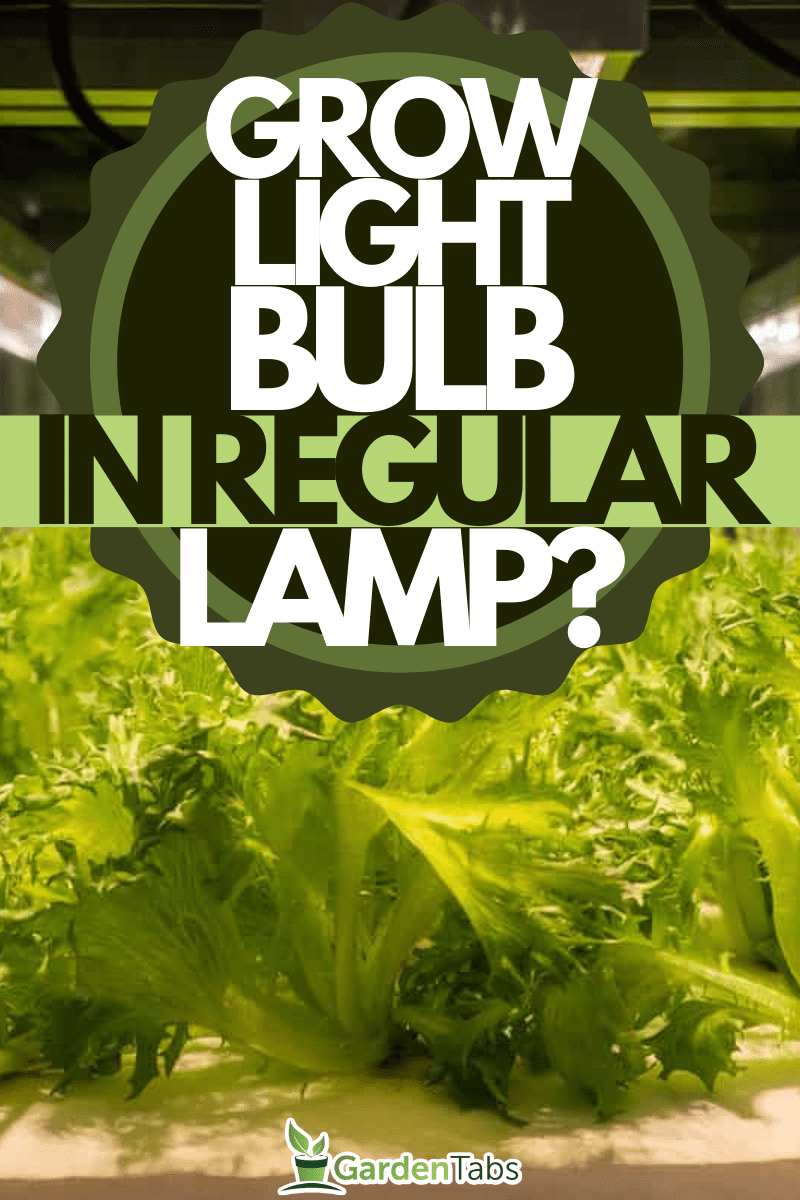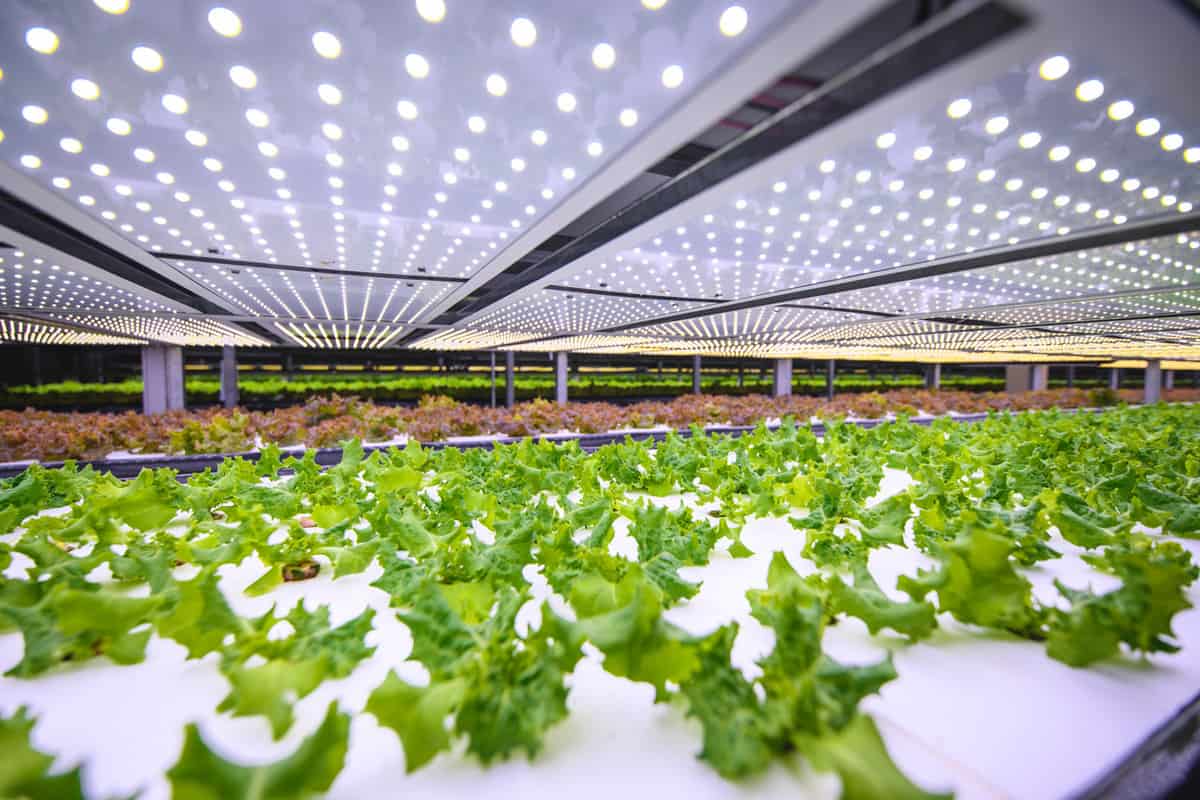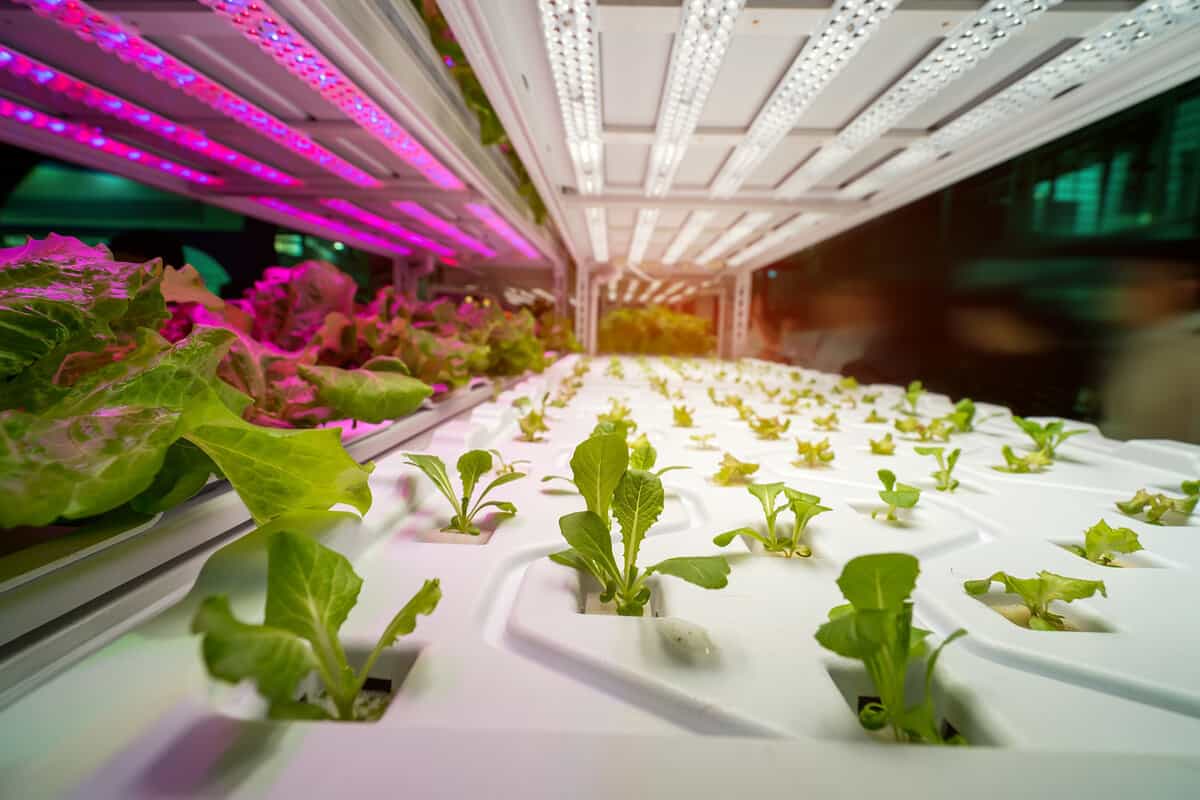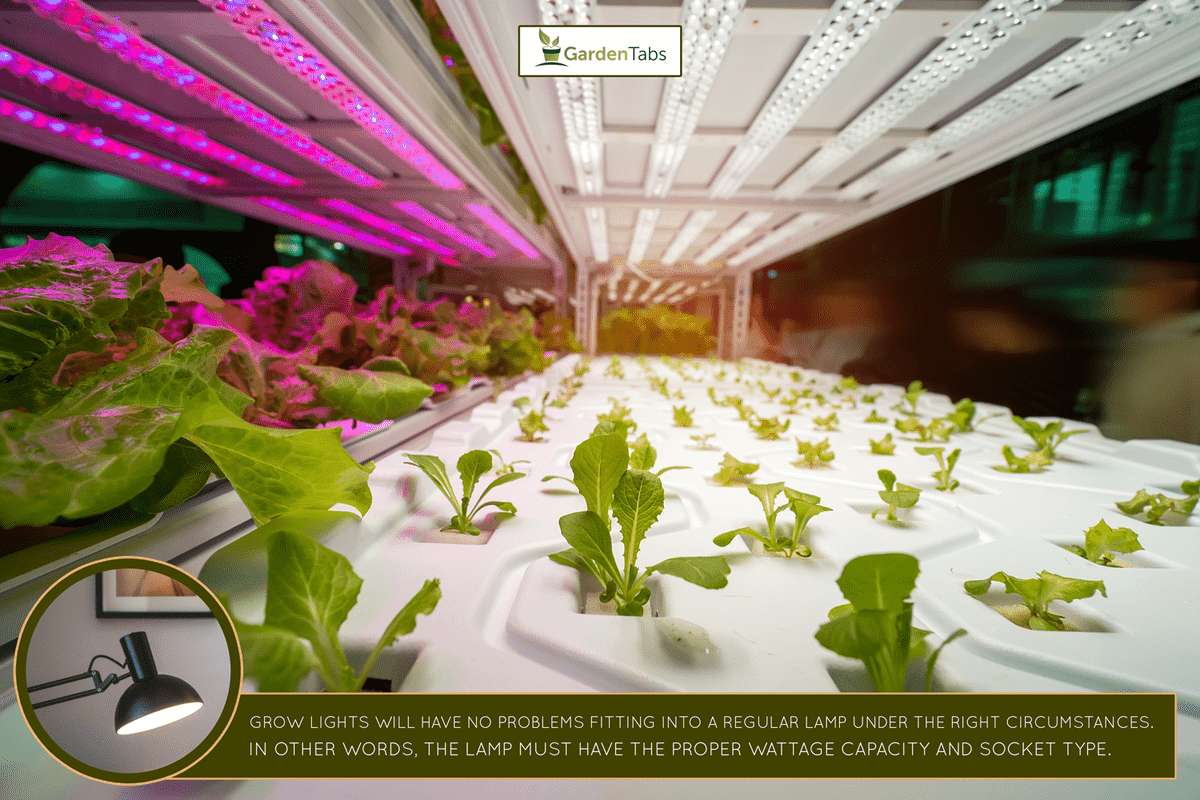Many gardeners often wonder if they can use a grow light bulb in a traditional lamp. After all, it would seem more convenient than setting up specialized grow light fixtures. So we did some significant research into the topic and found a precise, clear answer.
Grow lights will have no problems fitting into a regular lamp under the right circumstances. In other words, the lamp must have the proper wattage capacity and socket type. If it doesn't, the grow light won't work as expected.
However, this answer doesn't help you determine whether it's a good idea. So our next section will cover the differences between a grow light and a regular light bulb to provide more context. It'll help you decide if a grow light bulb in a lamp is a good move for your needs.

What's The Difference Between A Grow Light And A Standard Light Bulb?
Understanding the difference between grow lights and regular lights isn't straightforward. There are several vital elements to cover before you can make a choice.
Therefore, let's not waste more time and look at our first one.

Price
Some regular light bulbs, such as standard LED lights, are known for their relatively expensive price tags. Anyone who's had to buy one for changing lamps or garage lights can attest to this fact.
Honestly, it's pretty remarkable how much these bulbs can take out of your savings.
Most grow lights don't have the same issue as they're relatively more affordable. It's why so many people have looked into changing out regular light bulbs with them.
Overall, it seems like a convenient way to ensure your indoor plants and rooms get the necessary light.
But we also must note that grow lights aren't as widely available as regular lights. So it becomes much more challenging to buy them in bulk.
Heat Production Rate
Heat production or emission is a massive component of choosing between regular and grow lights. Standard lights will produce much more heat than what you get from grow lights.
As a result, it makes them effective in keeping a room full of light and other similar duties.
But the higher amount of heat can cause problems for indoor plants. For instance, regular lights have been known to burn leaves with heat production. So users must be careful when using them to avoid this outcome.
If you use regular lights, you shouldn't hang them closer than 24 inches to your plant. This setup will help ensure your plants grow without any burning issues.
You'll also want to install a ventilation system to help remove the excess heat from the room.
Meanwhile, grow lights will be much cooler and must be placed closer to the plant. We've found four inches above the plants to be the most effective setup.
If you stick with these suggestions, we're confident using a grow light with a regular lamp or light fixture will be fine.

Power Output
Manufacturers build grow lights to produce more power than regular lights. It's crucial to ensure these grow light bulbs can increase your plants' photosynthesis rate.
These bulbs' intensity ensures your plants have enough energy to grow effectively.
Of course, some grow lights will offer more power output than others. You'll come across many types of grow lights on today's market with varying intensity levels.
As a result, each one will have a different amount of produced power.
So it's essential to choose a grow light's intensity based on your plant's needs. It shouldn't be too difficult to figure out what intensity best suits your situation. Most manufacturers will list acceptable plants in the bulb's product description.
Buyers would be wise to stick with these recommendations to avoid any issues.
Otherwise, your plant might not get the energy necessary to grow effectively. So research to ensure your grow light bulb is the right intensity before using it in a regular light fixture.
Spectrum

Grow lights are constructed to mimic sunlight.
You may be reading this article wondering how light bulb manufacturers manage to simulate sunlight. It comes down to knowing that light is made of several wavelengths, which create the light spectrum.
You'll come across some light bulbs that only produce specific wavelengths. Due to this, you can't expect them to have the same effect on plants as grow lights or the sun.
Many people with struggling indoor plants placed under these bulbs don't realize this.
In doing so, they aren't providing their plants with enough sunlight or light bulbs that mimic it. Grow lights would solve this issue as they produce the same wavelengths as our sun.
Efficiency
Efficiency is an area where regular bulbs offer better performance than grow lights. How much more efficient they're can vary based on type.
For example, if you buy standard LEDs with an energy-saving design, these choices are significantly more efficient than grow lights.
So it leads to a question most buyers don't want to answer: do you value your plant's well-being or energy conservation more? Grow lights are a better option for the former, while regular lights offer optimal results for the latter.
Durability
A primary downside to using grow lights is their durability level. They offer a shorter lifespan than what is provided by traditional light bulbs, such as regular LEDs.
So many buyers view them as inconvenient in the long term.
If you're wondering what makes them less durable, it stems from their intensity. Their high light intensity causes grow lights to burn out faster.
Most people tend to only increase this burnout rate by using them in situations where plants have little to no sunlight. But you could preserve them better by moving the plant into a place with direct sunlight.
Due to this, the grow light bulbs wouldn't have to function as the plant's only light source. You'll need to obtain many affordable grow lights if it isn't possible.
Can You Put Grow Lights In Any Fixture?
Since we already know these grow lights can fit into regular lamps, it brings up the question of what other traditional fixtures they can fit into.
Grow light bulbs will have no trouble being used with most standard light fixtures.
You could put one in your garage light, table lamp, living room ceiling, and many more applications. It's just a matter of ensuring the correct wattage capacity and socket type.
Many interior designers and homeowners seek them out due to their performance quality. They also do an excellent job fitting into almost any aesthetic a person might want for their homes.
Given this info, homeowners shouldn't hesitate to use a grow light in a standard light fixture.
But it's vital to consider what type of performance it will provide. Otherwise, it might not deliver the results you want from your lamp, ceiling, or garage light.
Are Grow Lights And LEDs The Same Thing?

Some people often confuse whether all LED lights are LED grow lights and vice versa.
But it's vital to understand the differences between the two. For instance, standard LEDs only provide illumination to light up a dark room.
But LED grow lights are a bit more complicated. These bulbs offer a much broader spectrum of red and blue light to help improve plant growth.
As a result, don't assume a standard LED light bulb will provide the same performance level for plants as an LED grow light.
To Finish Up

You can put a grow light bulb in a regular lamp or any traditional light fixture with the correct wattage capacity and socket type. But it's also essential to consider whether it's a suitable option.
You'll need to ask yourself if a grow light's strong power output is worth the inconvenience.
Let us know where you fall in this argument within our comment section. Plus, don't forget to check these other related articles to further your knowledge on grow lights and growing plants indoors:

What about the effect on a person if they sit in a room all day that has their regular bulbs replaced by grow lights?
I am concerned with this also. My plants are doing so much better since I replaced my regular bulbs with grow light bulbs in my lamps. Now I am wondering what the effects on me are!